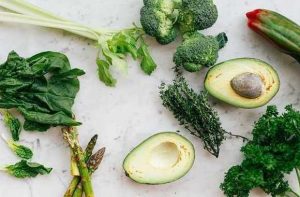The 4 Tips To Help You Cook With Herbs And Spices

It doesn’t matter if you are a new cook or somebody with loads of experience. There is always something new to learn in the kitchen. Something that intimidates newbies and veteran cooks alike is using fresh herbs and dried spices. Cooking becomes truly special with the right touch of herbs and spices.
To get the most out of them, you have to know when to use them and which kinds work best. Not every spice or herb will work in every recipe. For instance, as you can see from this article by OneReCP, there is a difference in coriander seeds and ground coriander. In this article, we will go over a few tips to help you cook successfully with herbs and spices.
1 – Understand pairings
Pairing the right herb or spice with your food can make a big difference in taste. Every type of dish, from meats to vegetables, can be improved with the right seasoning.
For meat dishes, robust herbs like rosemary, thyme, and sage add depth and warmth. Spices like cumin and paprika are great with beef or lamb, giving a rich, earthy flavor. Chicken and fish go well with lighter herbs like parsley and dill. They add a fresh taste without overpowering the dish. Vegetarian dishes are livened up with a mix of spices. Turmeric, coriander, and cumin add color and a burst of flavor to vegetable curries and stews.
When you are cooking soups or stews, adding herbs and spices early in the cooking process allows their flavors to develop fully. For salads and lighter dishes, fresh herbs like basil and mint are perfect. They add a fresh, clean taste. It’s also fun to try different combinations.
For example, Italian cuisine often uses basil, oregano, and garlic. These create the familiar flavors we love in pasta sauces and pizzas. In Mexican cooking, chili, cumin, and coriander are used together for a spicy and vibrant taste. The key to remember is that the flavors should complement but not overpower the main ingredients.
2 – Cooking techniques
Using herbs and spices in cooking is easy once you know a few simple techniques. Fresh herbs can be chopped and added to dishes for a burst of flavor. Use them early in the cooking process and then add the same herb after to give contrasting flavors to the dish.
When using dried herbs, remember they are stronger in taste. A good rule of thumb is to use one-third of the amount you would use if they were fresh. For example, if a recipe calls for one tablespoon of fresh basil, use only one teaspoon if it’s dried.
Using whole spices is usually preferable to using already ground and powdered ones. To release the full flavor of spices, you can toast them. Just put them in a dry pan on low heat until they start to smell fragrant. This works well for seeds like cumin or coriander. Grinding spices right before using them also brings out more flavor. You can use a spice grinder or a mortar and pestle.
Marinating meat by rubbing it with herbs and spices can add a lot of flavors. This works well if you leave it for a few hours or even overnight in the fridge. Another technique is seasoning. This means adding herbs and spices during cooking. This helps build layers of flavor. For example, adding some garlic and thyme to your roast chicken as it cooks makes it more delicious.
3 – Selecting and storing spices
When buying fresh herbs, look for bright, vibrant leaves without any dark spots or wilting. They should smell fresh and strong. Then, to store them, dampen a paper towel and wrap the herbs in it. Then wrap that once again in plastic wrap and place in the fridge. This will give you a few days to use the herbs before they start losing flavor.
When buying spices, it’s best to buy whole spices and then grind them yourself. If this isn’t an option, then look for stores where you can buy the spices in bulk instead of containers. Usually, the spices are fresher. Not only that, but you can buy just a little so you don’t have spices sitting in your pantry for months.
Dried spices and herbs should be kept in a cool, dark place. A cupboard away from the stove is a good spot. Make sure they are in tightly sealed containers. This helps them stay fresh and flavorful.
4 – Blend your own spice mixes
Making your own herb and spice blends is a fun way to add a personal touch to your cooking.
A basic blend could start with some common spices like garlic powder, onion powder, and paprika. These create a good base. Then, add something for a bit of heat, like cayenne pepper or black pepper. If you add some dried thyme and oregano then you’ve just created your own blackening seasoning.
For chicken, a blend that includes herbs like rosemary, thyme, and sage, along with garlic powder and a touch of paprika, can provide a savory and slightly earthy flavor. This kind of blend works well for roasted or grilled chicken.
When making ethnic recipes, a spice blend is essential. For instance, a Mexican-inspired blend could include chili powder, cumin, coriander, and a bit of lime zest for brightness. This works wonderfully in tacos, fajitas, or bean dishes. For an Italian twist, combine basil, oregano, rosemary, and garlic powder. This blend is perfect for pasta sauces, pizza, or Italian dressing.
Conclusion
Adding spices not only add depth and complexity to your dishes but also offer health benefits and even a connection to various culinary traditions.
There’s no single right way to use these ingredients. Don’t be afraid to try new combinations and have fun with trying different combinations of spices. Herbs and spices can be tools to help you express your creativity in the kitchen. Just follow these tips in this article can transform your cooking.






